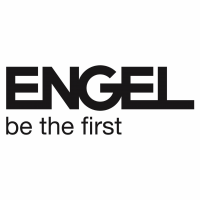Public vs Private Blockchains: Examples, History, and Comparison
Content
This is typically because private blockchain is used in the corporate and business to business sphere, where it is important to know who is involved, but we’ll discuss that public vs private blockchain more later. The private blockchain is owned and operated by a central operator who gives access to specific individuals or an organisation who wishes to use the private blockchain. The blockchain owner can change the consensus protocol, rules, or override any entries placed on the blockchain. Access to the blockchain is controlled by a central authority and could be less decentralised than the public blockchain. Only verified individuals have access to the blockchain, reducing the risk of bad actors gaining access to the system.
The Risks of Adding Encrypted Data on the Blockchain
An aspiring entrepreneur having led 75+ startups on the right path with information-admiring content. He crafts content on topics including on-demand services apps, finances, technology trends, etc. They do not necessarily purport to reflect the opinions or views of Shardeum foundation. Generative AI is introducing a brand-new risk vector to the tech domain including issues such as ‘hallucinations’, ‘jailbreaks’ and ‘adversarial prompting’ that can manipulate data. Privacy is something that was already addressed in https://www.xcritical.com/ the original Bitcoin whitepaper published by Satoshi Nakamoto back in 2008. He proposed that this security measure came through the anonymity of the two parties engaged in the transaction and that new “identities” be used for each transaction.
The Key Challenges of Private Blockchains
In a recent interview, Cooperstein shared his enthusiasm for this shift toward greater connectivity across blockchains. These platforms are also open to Mining pool the public, so no corporation can stop you from downloading the nodes and joining the consensus. When debating whether to use a private, public or some other form of blockchain, there are important questions to ask yourself, experts say. Private blockchain records can be edited, overridden or deleted by the operator of the network, according to Investopedia.
Public vs Private Blockchain For Asset Tokenization
This is considering a hybrid can take advantage of all the 3 properties of a blockchain at the same time – scalability, decentralization and security. So taking a middle ground is not unreasonable for industries significantly contributing towards the likes of national security, and private enterprises. However once you get an idea about both public (permissionless) and private (permissioned) blockchains, you would be able to relate and peruse better when different types of blockchains are discussed in a discourse.
Common Misconceptions About Public Blockchains
The block reward is intended to supplement the fees earned by transaction fees in each block. Building and maintaining a blockchain can be expensive, so consider the cost of implementation and ongoing maintenance when choosing a blockchain for your business. Public blockchain transformative potential is being realized across a wide range of industries, fueled by their unique capabilities. Another prominent example is Ethereum, which functions as both a platform for the Ether cryptocurrency and a decentralized computing platform for various applications. Its smart contract functionality has fueled the growth of decentralized finance (DeFi) apps, non-fungible tokens (NFTs), and other innovative projects. If both authorities and the company have an official shared reference of where the records are kept, then not only can they trust each other, but the public can trust them as well by extent.
Once the transaction is confirmed by the nodes, it is added to the blockchain as a new block. In contrast, PoS blockchains have much lower energy consumption and carbon footprint than PoW blockchains, making them a more environmentally friendly option. Because PoS blockchains do not require vast amounts of computing power to validate transactions, they consume far less energy.
Anyhow, the public blockchain network was the first-ever blockchain type in the revolution. As a matter of fact, it was Bitcoin that laid the foundation of blockchain technologies. Once people started to see the underlying technological benefits, they started developing other blockchain variations to get rid of all the issues. Both these blockchain networks are continually evolving and addressing their shortcomings. So it becomes too difficult to choose the right option to develop a blockchain platform for business and determine the important aspects like cost, efficiency, access, security, speed, etc. Consortium or federated blockchains operate with a particular group of participants who control the blockchain, rather than a single entity.
Anonymity and privacy are significant parts of the success of blockchain technology. Replacing the manual and semi-manual tasks within the firms is preferred with the private blockchain network. However, a public blockchain is more for those who want to genuinely work on a decentralized, totally transparent, immutable system to work with larger communities.

Public blockchains allow anyone to view transaction amounts and the addresses involved. Private blockchains can also communicate with other blockchains via oracles or other solutions, but this creates security gaps via additional connections. Public blockchains are designed with distribution and decentralization in mind so that anyone can access them and participate. However, there are different ways to maintain a high degree of privacy and confidentiality. In addition to using Verifiable Credentials, off-chain data can be linked to a public blockchain by storing a hash of the information on the blockchain.
Public blockchain is more popular with projects that are serving larger communities because of the transparency, which in turn fosters more trust. These open-source networks enable the execution of smart contracts, allowing a wide range of applications, including decentralized finance, decentralized exchanges, and crowdfunding. These are just a few illustrations of how public blockchain examples are disrupting traditional systems and paving the way for new possibilities.
They offer a controlled environment overseen by a central authority, typically the organization that created the blockchain. Transactions are still recorded on a ledger, but access is restricted only to authorized users. Think of it as a members-only club – only those with permission can enter and view the records. Solana, another high-performance public blockchain, further expands the possibilities of blockchain technology by focusing on scalability and speed. This makes it a popular choice for projects that require high transaction volumes, such as decentralized exchanges and gaming platforms. Another key feature of private blockchains is their permissioned structure.
These networks rely on a pre-selected group of trusted validators to verify transactions. This allows for faster validation times compared to PoW in public blockchains. This centralized approach brings advantages like faster transaction processing and streamlined governance. Since a single entity controls access and record-keeping, there’s a potential risk of manipulation or bias within the network.
- This makes it suitable for financial institutions and other enterprises handling sensitive data.
- This validation can be a manual method of implementing smart contracts or self-regulating approaches.
- Some examples of public blockchain networks are Bitcoin, Ethereum, and Litecoin.
- In the consensus mechanism, if that is the case, there are finite validators to achieve a consensus about transactions and data, and that is why this network is also liable for protection and data infringements.
Just as I said before, public blockchains are like those bustling marketplaces that are always buzzing with activity. This open environment is great for inclusivity, but it can also lead to some congestion. This approach offers greater security and privacy for sensitive data, making it valuable for businesses dealing with confidential information or intellectual property. However, it also raises concerns about the potential manipulation, as a limited group controls who sees the data. Public blockchains are like giant online bulletin boards – every transaction is openly broadcasted and permanently recorded on a public ledger.
This feature creates a ‘digital fingerprint’ and is used by transaction processors (aka nodes) for securing the integrity of the blockchain. The blockchain is simply a sequence of blocks (or linked list) containing data linked to the previous block header via a hash pointer. The hash header contains the last block’s hash output and a hash of the data inside the previous block (Merkle root). The predominant perception has been that, if you were a bank or enterprise, you’d probably want to implement permissioned blockchain. Public blockchain, by the inclusion of the word public, is understood as if it would automatically expose corporate, government and personal data into the public realm.
At its core, blockchain is a decentralized, transparent, and immutable digital ledger, where transactions and data are securely recorded. Unlike centralized systems controlled by a single authority, blockchain operates through a distributed network, ensuring trust and accountability. Private blockchains, such as Quorum and Corda, excel in controlled environments.


 Bedienpulte
Bedienpulte Industrie PC
Industrie PC Tablet PC
Tablet PC Industrie Monitore
Industrie Monitore Industrietastaturen
Industrietastaturen Ersatzmonitore
Ersatzmonitore LED-Anzeigen
LED-Anzeigen







